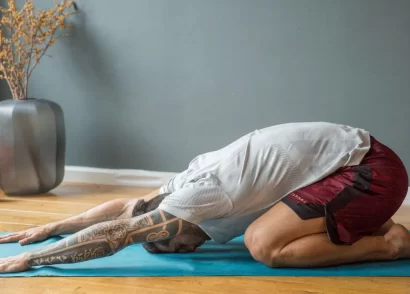Choosing the right meditation type for you is a personal journey that depends on your needs, preferences and goals. Experimenting with different types of meditation and consulting with meditation teachers can help you find the one that works best for you.
Mantra meditation involves repeating a mantra (either aloud or silently in your mind) to keep the mind focused and calm. This practice also increases self-awareness.
Focused Meditation
Focused meditation trains the mind to remain on one object of attention, such as a candle flame or a mantra, and to tune out distractions. It can also help improve concentration, enhance self-awareness and boost cognitive performance.
When it comes to emotional regulation, focused meditation can be helpful by teaching you to respond to your emotions calmly and without judgment. For example, when an unwanted thought or feeling arises, you can practice responding to it with “OK, I’m noticing this but I’m going to return my attention to my breath.”
Other types of focused meditation include visualization, which involves picturing something inside your mind, and transcendental, which involves repeating a word, phrase or sound over and over again. It’s recommended that you start with five-minute sessions and work your way up to longer periods as you gain confidence in the process. Past research has shown that this type of meditation increases activity in the fronto-parietal network (FPN) and sensory-motor networks.
Mindfulness Meditation
Mindfulness meditation is a form of meditation that helps reduce stress and anxiety. It also improves memory and mental clarity. Its benefits have been proven in scientific studies.
During this type of meditation, you concentrate on your breathing, body sensations and emotions. You notice any thoughts that come up and allow them to pass without judging them. It’s okay for your thoughts to wander during a mindfulness session; just return your attention to your breath or a mantra.
Research suggests that this type of meditation is an effective treatment for depression and chronic pain. It can also help patients with heart disease, as it lowers blood pressure and slows the heart rate. Moreover, it increases levels of immune-boosting cells in people with cancer or HIV. It is also linked to reduced inflammation and increased telomere length, which improves cellular health. Practicing mindfulness may also be an effective way to overcome addiction. It can decrease cravings and strengthen support networks, as well as increase feelings of compassion and kindness.
Transcendental Meditation
Transcendental meditation (sometimes referred to as TM) is an ancient spiritual practice that focuses on a mantra. A mantra is a repeated sound that drives your awareness away from external stimuli and toward inner peace. Your TM instructor will give you a personalized mantra that works for your unique needs.
Research has shown that TM can help reduce stress, anxiety, and depression, as well as lower blood pressure. It can also aid in the treatment of addiction, ADHD, post-traumatic stress disorder, and other disorders.
Whether you need to solve a problem at work or find new ways to grow your business, meditation can help. It’s a tool that can boost your productivity, and the best part is, it’s free! If you’re ready to get started, BetterHelp has a wide variety of therapists who are available to help. Our online therapists are licensed, experienced professionals who can provide the support and guidance you need. Start with a free online assessment today.
Progressive Muscle Relaxation
Developed by Edmund Jacobson, this stress-management technique is designed to encourage mental relaxation through physical sensations. Progressive muscle relaxation involves systematically tensing and relaxing different muscle groups throughout the body.
Begin by finding a comfortable place to sit or lie down and close your eyes. Take a deep breath and begin by focusing on your breathing and letting any tension slip away. Tense one group of muscles, such as your shoulders or your abdomen, for 10 seconds and then let the muscles release. Move on to the next group of muscles until you have tense and relaxed every muscle group in your body.
This exercise can help reduce the symptoms of anxiety by addressing the fight/flight/freeze responses in your body. It can also help relieve the pain caused by chronic stress and tension. It has been shown in studies that when performed with the right intention, muscle relaxation, along with deep breathing and guided imagery, can help to promote physiological relaxation.











